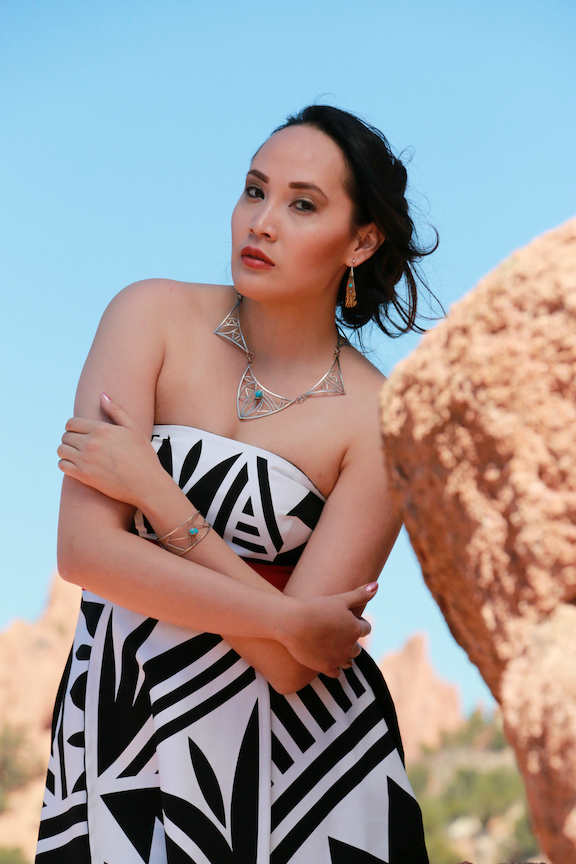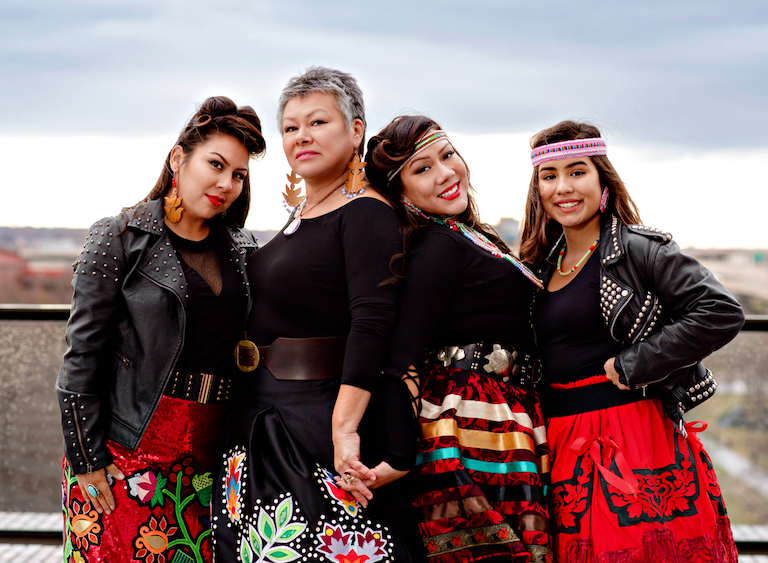Whether you drive a hundred miles up north, backpack out west, tread south or trek east, you’re bound to find yourself in Native country. Despite the rich culture and traditions of Native Americans, it’s apparent that historical discrimination still continues to exist today. Mainstream fashion, for instance, has been one of the many culprits of instigating inequity through cultural appropriation.
Cultural appropriation can very-well be done unconsciously — without explicit harm — but it is conscious ignorance that is even more detrimental. For instance, Halloween costumes depicting traditional Native American dress are not only troublesome, but completely disregard the truth behind the symbolic roots.
“A non-Native person appropriating is very harmful because they take those opportunities [to share creative traditions] away from Native people. The little chance that we do get will be taken away,” said Kelly Holmes, founder and editor-in-chief of Native Max Magazine.

Holmes is an advocate who helps uplift the voices of Indigenous people from North America and beyond. Celebrating Indigenous talents and people through positive storytelling, she told 303 Magazine that many designers and artists incorporate their rich history and culture in their work to diversify mainstream fashion.
“The fashion industry is already such a huge, long stretch for Indigenous people, especially for those who don’t have the privilege of being closer to resources such as fashion incubators, boot camps, learning centers, etc. Also, the lack of access to materials, tools and supplies to get a good start. There are also fewer doors for Indigenous people to pursue fashion — for designers, models and fashion photographers.”
Holmes attested that Native designers and artists are simply contemporary people with modern ideas and solutions – honored to choose to share their gifts and stories with the world.
But, what happens when appropriating for profit continues to ensue? The fashion industry’s notorious track record of crossing the fine line between creative freedom and the realm of outright prejudice has been an unfortunate phenomenon. With this, appropriation has consistently been recognized at events, social happenings and more. Take Victoria’s Secret for example. Its once popularly televised fashion show was at one point known for its blatant use of appropriating Native Americans and other indigenous cultures all under the guise of fashion.
The local designer behind streetwear apparel brand Native Gorilla, Lakota Sage, emphasized his disapproval among several non-native fashion brands — like Victoria’s Secret — that use traditional regalia, including headdresses as costume wear in large runway shows and photoshoots.

“It makes me feel disappointed as I had looked up to some of these brands as inspirations. It also makes me realize the rampant ignorance that lives among us. People just don’t get it, and some tend to even defend it when called out. #ourcultureisnotacostume,” he explained.
He also told us that several Native designers have taken aspects of traditional dress to create modern Native fashion — himself included. Whether it be from the flow of a dress, to a pattern, or color choices — particularly inspiring Sage’s own streetwear line — tradition and culture always come full circle.
Keya Clairmont — 2016 Denver March Powwow Princess and multidisciplinary Native artist that uses dance, photography and illustration for self-expression — elaborated further by mentioning how Native American culture inspires modern fashion through its distinct attention to detail. This can specifically be found among the intricacies of handmade beadwork and sewing practices. She added that the style of Native dress also stems from colonialism. “The things we wore, such as long skirts or shawls, were given to us by the government and we had to make them look beautiful. There are so many tribes out there and we all made it our own.”

Taking their time to create designs with purposeful meaning is incredibly important to Native culture. Showing a beadwork design in progress for her brother, Clairmont exemplified that every single tiny bead they pick, time spent and having good thoughts and feelings all matter when making authentic pieces by hand — whether it be for oneself or another.
“When I see high fashion copying designs/beadwork and just slapping print on a dress or imitating beadwork on jean jackets, etc., it infuriates me because they commodify it and totally diminish the whole reason of why we do the things we do,” she asserted. She went on to caution that appropriation simply doesn’t stop there, as it can lead to the erasing of Native culture itself.
So, how exactly then can non-Natives both respectfully and thoughtfully celebrate Native Americans’ diverse culture and traditions within the spectrum of fashion?
To Sage, it’s easy. “Pay for native fashion and jewelry from native fashion and jewelry designers. Simple as that. Don’t copy works or get knock-offs, and don’t attempt to wear sacred regalia as costume wear or accessories. Always give style credit where it is due.”
Holmes similarly agreed that encouraging non-Natives to connect with Native American fashion designers and artists and shop with them helps to promote positivity across the board. She explained that many are small business owners with good, healthy intentions.
“It feels good knowing that your purchase is a one-of-a-kind design unlike anything out there. Some Native designers and artists may share the stories of inspiration or history behind their works, which is the knowledge that you can pass on to another.”
As for Clairmont, she believes that one should always do their due diligence by researching and connecting with respected leaders and elders of their community. Having taught and performed with the Colorado Ballet on a collaborative 2018 dance project — combining Native American Fancy Shawl Dancing with classically trained ballet dancers — she articulated that certain pieces of clothing can and cannot be worn by those outside of Native culture. “If it feels wrong, then it’s most likely wrong. But if [something] feels questionable, like ‘should I be wearing these earrings,’ for example, they should just ask.”
The bottom line is that we live in an exceptionally interconnected world. With that, supporting others from different backgrounds is an important step towards revamping mainstream fashion. Whether they be local artists or designers — and those across the country — Native American traditions and culture will continue to prosper and influence modern Native fashion on and off the runway. It’s up to society as a whole to relinquish ignorance and welcome genuine acceptance.





